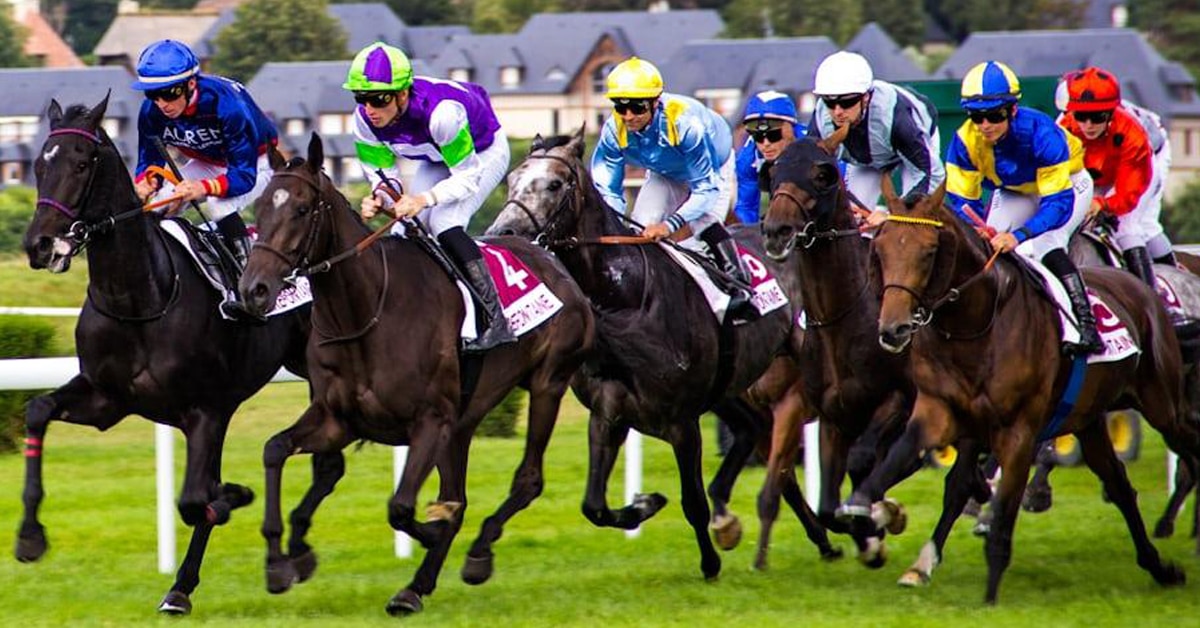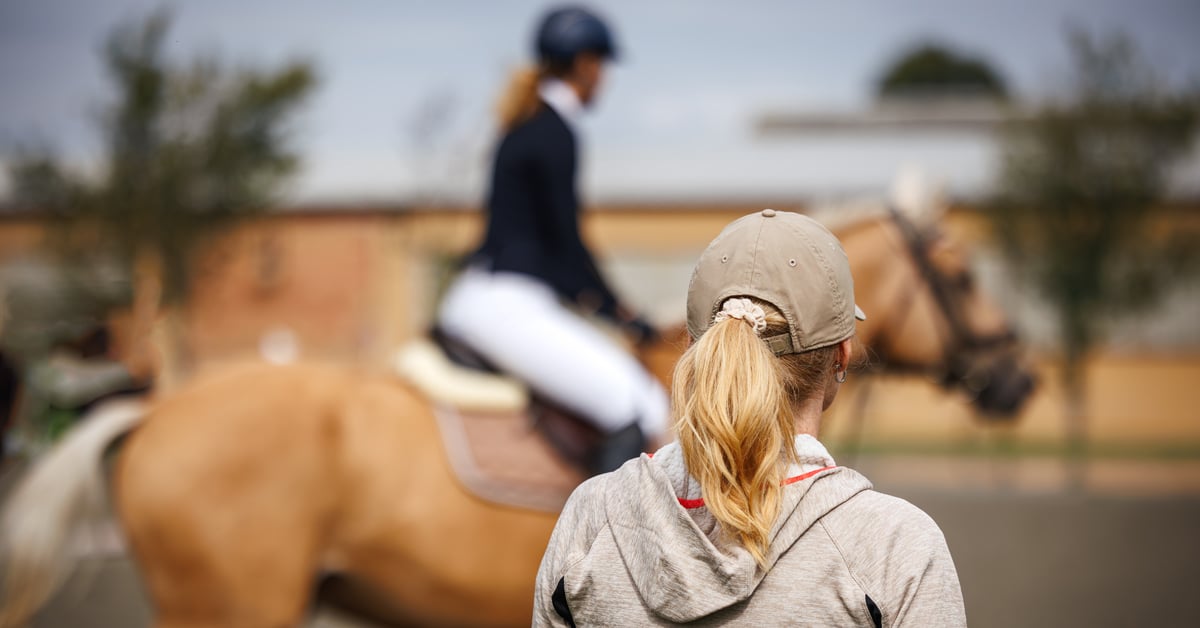As a seasoned breeder, I continue to hear from buyers who are looking for a made horse at a low fee. I decided it might be a good idea to break down the costs for people who might not be aware of all the expenses associated with developing a new riding horse.
There are some hard realities that come into play when breeding, raising and training horses for the sales market that many purchasers are unaware of, no matter where in the world you buy them.
To begin with, the breeder must have a mare, and the better the mare’s attributes and record, the more she will cost. The breeder needs a stallion for their mare; stallion semen can range in price depending on the location, quality, show record and popularity of the horse. Breeding stallions fetch a few hundred dollars for local fresh semen or even live cover for a horse that has no record as a sport performance horse, to thousands of dollars for freshly frozen semen from popular international foreign-based stallions. (We are not talking about Thoroughbred stallions, as they operate at a different level, with the top stallions’ fees costing tens of thousands or more.)
Once the stallion is chosen and the semen is paid for, including several hundred dollars for shipping and delivery, the breeder then needs to get the mare pregnant. The old-fashioned way of putting stallion to mare is the cheapest – but also the most dangerous. Our first foal was from a live cover. We got a lovely pony out of it, but our mare had 16 stitches to close up a bite on her neck and she reciprocated by kicking the stud (with no shoes on) for 12 stitches on his chest. It was true love!
Today, most breeding in the equine world is undertaken with artificial insemination (AI) under the care of a vet. Costs vary greatly. A young mare with no health issues is the easiest to get in foal, but with ultrasounds to check the cycles, drugs to facilitate the breeding, etc., it will still run well over $1,500 and can be as much as $2,000. If the mare is older than 14, and especially if she has never had a foal before, the costs start to increase.
Older mares may have great show records and can be very attractive to breed, but are often harder to get pregnant. Multiple attempts are not uncommon and the chance of miscarriage is also higher. The cost for this starts to creep up towards $3,500 or more per attempt. If the decision has been made to have another mare carry the embryo rather than the egg donor, the costs increase again, as you are essentially getting two mares pregnant to get one foal. It’s easy to go over $5,000 per attempt on vet fees to get an embryo transfer to succeed.

New foal Valkyrie MBH (Mouse) two weeks old with mare Winnipeg Jet (Jetta). (Alexandra Clark/Ellipsis Consulting photo)
Once a breeder gets the mare pregnant and if nothing goes wrong (only about 35% of pregnancies are successful), the foal has to be born. Doing it on the farm is the cheapest option; all it costs is extreme lack of sleep and a few hundred to $1,000 in vet call fees – if it is an uncomplicated delivery. If the mare requires help or there is trouble with the pregnancy, the costs again begin to mount. Most breeders are focused on getting that foal and keeping that mare, so we do what has to be done. A $2,500 vet bill would not be out of line.
Once the foal is old enough, it is weaned from its mum and lives its own independent life. Herds of weanlings, yearlings and two-year-olds are not uncommon sights in horse country, but not every breeder breeds that many. Small groups or pairs of foals is more normal in most of North America, with the foals getting more hands-on attention and education than foals from large herds. It costs more than ‘out ’til they’re three’ horses, but the youngsters are better behaved and settled into the human world than their more feral buddies.
Herd youngsters eventually have to be brought in and handled, which will take money and time, as most are not interested at the age of three to discover that their life is not eating, running with their pals, and eating again! It’s a choice made by the breeder and it will cost either way. So far that baby horse is running $5,000-$10,000 for a yearling, depending on how it was created and raised.
Once the foal is three years of age, most breeders will send it to a professional to be backed and trained in its specific discipline. Finding a reputable trainer is a job in itself. Getting the foal started well and carefully is essential to its success as it grows and becomes the show horse that people want to buy. Choose someone less skilled or patient and you can scar or traumatize a young horse so that they never fulfill the promise of their breeding. Go too fast or hard and you could physically damage the young growth plates or scare a horse with too much, too soon.
Of course, finding those really good trainers is hard and as a result is costly. If a breeder is lucky, skilled, and doesn’t mind bouncing off the ground, they could do it themselves, but most use professionals. Depending on where you are and who is available in your area, it can be as inexpensive as a few hundred for a month of training to a couple of thousand per month for in-demand trainers. Most young horses need at least 60 days to truly get the idea and some can take longer or need multiple visits. Remember, you need to add transportation unless the breeder has a trailer and is comfortable shipping baby horses that generally have never been off the farm.
So before a buyer even comes to see a young horse, the breeder has spent something like $15,000 to $20,000 and this does not include the everyday board cost of keeping the young horse until it sells, or the cost of carrying the mare. If you are interested in young horses with lots of training that have maybe gone to a few shows and have a record, add more cost and increase the price.
If you are looking for a simple young horse to use as a trail horse or fun mount to take local schooling shows, then you should be able to find something that will fit a more modest budget. A pleasure horse of that variety does not need to have the big daisy-cutter hunter movement, the ability to jump an FEI-level track (or even anything over a couple of feet) and certainly won’t need to do it ‘with style.’
If you want a horse that is well-behaved, does the fancy things like lead changes, is bred from ‘famous’ bloodlines and has relatives that are succeeding in the show ring … prepare to pay. Rule of thumb for horse dealers is generally $10K a year for a young horse until it’s three or even four. It will take almost that much to get a horse to that level depending on how many other professionals had to be involved. Trainers are professionals for a reason.
Buying a foal with all the potential of its breeding can be quite economical, say $5,000-$15,000 depending on location and the local market. Of course, you then have to pay its board and training instead of the breeder. It’s a wonderful process if you have the experience and skills to do it yourself. If you don’t, you can be creating a horse that will not meet your needs – or in the end, anyone’s – and the investment you have made will be worthless.
Breeders are rarely in this business to make money, but we are not in the business to lose money, either. No one wants to pay more than they can afford or more than a horse is really worth, but breeders and trainers don’t want to give away horses that have taken months of training and development for less money than it takes to cover its basic breeding costs.
So when you are looking for that perfect partner that is young but also well-behaved, has the perfect temperament, can do the fancy lead changes, is bombproof and and can carry a real amateur – think about what it took to get that horse to that level. What did it cost someone to produce this horse to be that unicorn you are looking for?
The Latest











